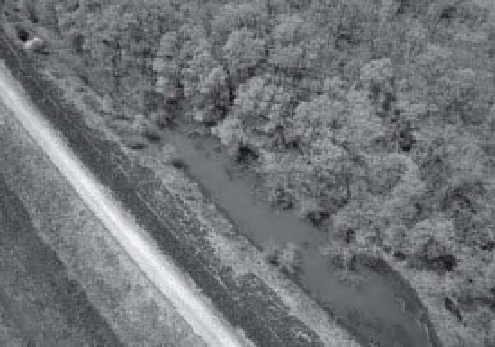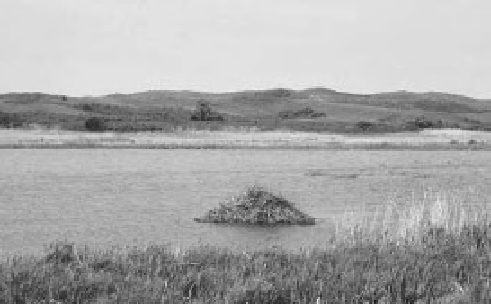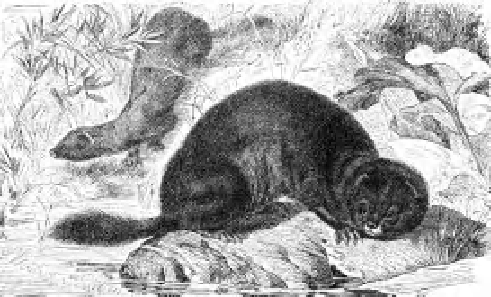Geoscience Reference
In-Depth Information
A
B
Figure 7-44.
Beaver dams in a roadside ditch, Neosho Wildlife Area, Kansas, United States. A. Elongate pools at
scene center are impounded by a series of beaver dams next to the road. B. Recent beaver dam backs up a small
pool that submerges trees next to road embankment. Kite aerial and ground photos by J.S. Aber and S.W. Aber.
Figure 7-46.
Sketch of European mink (
Mustela
lutreola
). Modii ed from original drawing by G. Mützel;
obtained from Wikimedia Commons
Figure 7-45.
Muskrat lodge in shallow marsh in the
Sand Hills of north-central Nebraska, United States.
Photo by J.S. Aber; Valentine National Wildlife Refuge.
<
http://
commons.wikimedia.org/
>
.
with only 20-50 individuals remaining (Howard
2010).
usually in urban areas (Salsbury and White
2000). The American bullfrog (
Rana catesbe-
iana
) is native to eastern North America.
Because it is highly desirable as a game animal,
it has been introduced in the western United
States and other parts of the world. It eats
almost anything smaller than itself and outcom-
petes native frogs (Elliot, Gerhardt and David-
son 2009). Where introduced, the American
bullfrog may become a pest that is quite difi cult
to eradicate (Sievert and Sievert 2006).
The nutria (
Myocastor coypus
) is a large semi-
aquatic rodent that was imported into the United
States from South America in 1899 for its fur
7.4 Invasive animal species
Invasive wetland animal species come in
all sizes and shapes (see http://www.
invasivespeciesinfo.gov/). For example, the
Asian tiger mosquito (
Aedes albopictus
) arrived
in the continental United States from Japan,
accidentally imported in tires in 1985 (U.S.
Department of Agriculture 2010b). Old tires
continue to be its preferred breeding habitat,









